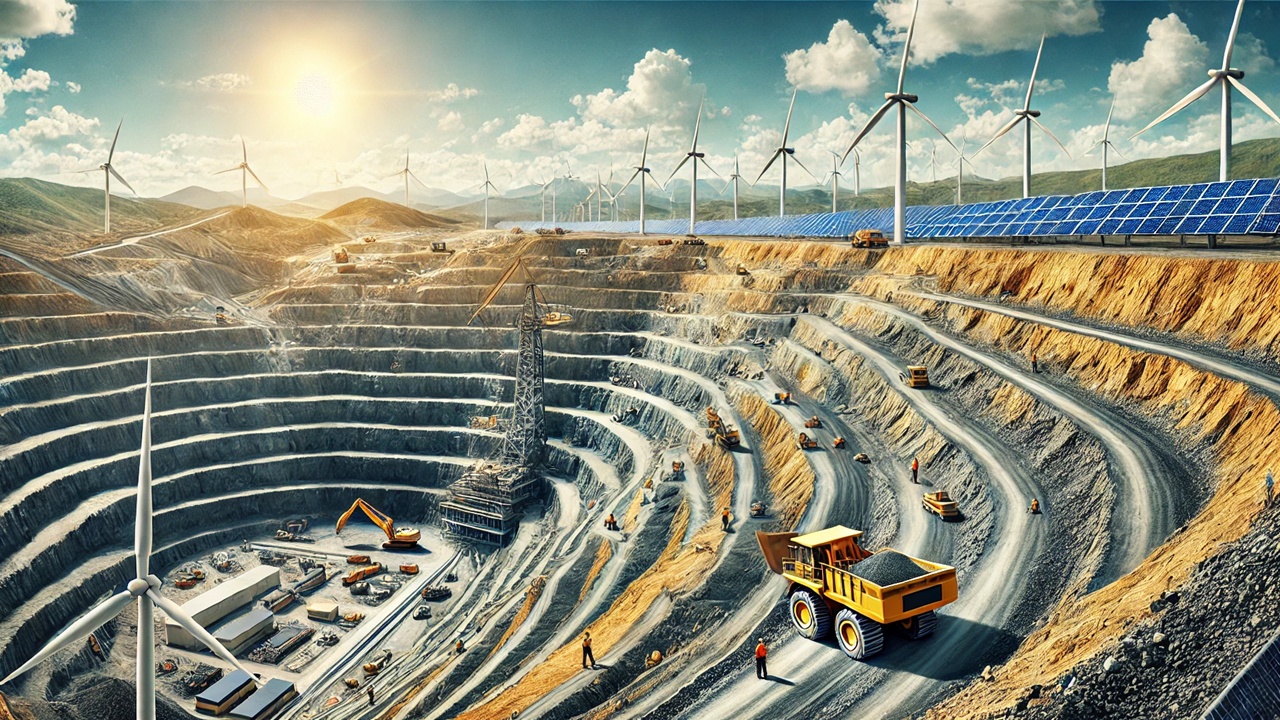The Race to Net Zero: How Critical Minerals Could Shape a Just Energy Transition
The article discusses the challenges and opportunities presented by critical energy transition minerals (CETMs) in the global shift toward renewable energy. As demand for these minerals is set to triple by 2030, a UN panel has developed guiding principles to ensure the energy transition promotes equity, justice, and environmental sustainability. The report, Resourcing the Energy Transition: Principles to Guide Critical Energy Transition Minerals Towards Equity and Justice, outlines actionable recommendations to ensure responsible mining, protect human rights, and empower developing countries.

As the global climate crisis reaches unprecedented heights, the call for immediate action has never been louder. With rising sea levels, devastating wildfires, and extreme heat waves, the world is facing a tipping point. The recent United Nations Climate Change Conference (COP28) emphasized the urgency of addressing the crisis by committing to triple renewable energy capacity and double energy efficiency by 2030. Central to this ambitious goal are critical energy transition minerals (CETMs), such as copper, cobalt, lithium, and nickel—essential resources that fuel renewable energy technologies. But the path to net-zero emissions carries significant challenges, raising questions about human rights, environmental integrity, and equity.
The Double-Edged Sword of Critical Minerals
While CETMs offer a crucial opportunity to accelerate the shift to renewable energy, the extraction of these minerals presents complex issues. On one hand, harnessing CETMs has the potential to lift millions out of poverty by providing access to affordable, modern, and sustainable energy. On the other hand, mining activities, especially in developing countries, have often been linked to human rights abuses, environmental degradation, and conflicts. Indigenous Peoples and local communities, in particular, have historically borne the brunt of these practices, facing dispossession of their lands and resources.
The increasing demand for CETMs is staggering. According to the International Energy Agency, the need for these minerals is expected to triple by 2030 and quadruple by 2040. However, without stringent measures, this surge could exacerbate social inequalities and environmental damage.
Principles for a Just Transition
To ensure the energy transition promotes equity and justice, the United Nations Secretary-General convened a panel to establish guiding principles for the responsible management of CETMs. The panel’s approach is clear: the energy transition must not repeat the mistakes of the past. It calls for governments, businesses, and civil society to work together to embed human rights, environmental safeguards, and justice throughout the entire value chain—from extraction to recycling.
The panel’s report, Resourcing the Energy Transition: Principles to Guide Critical Energy Transition Minerals Towards Equity and Justice, outlines seven voluntary guiding principles. These include ensuring that human rights are at the core of all mineral value chains, safeguarding the environment and biodiversity, and promoting justice and equity in mineral extraction and processing. The report also stresses the importance of responsible investments, good governance, and multilateral cooperation in managing these resources.
Actionable Recommendations for Fair Mineral Management
The report not only lays down principles but also provides actionable recommendations to put them into practice. One of the key recommendations is the establishment of a global traceability framework. This would ensure transparency and accountability across the mineral supply chain, helping to address issues like illegal mining, human rights violations, and environmental damage.
Another significant proposal is the creation of a Global Mining Legacy Fund, designed to address the environmental damage caused by abandoned or derelict mines. The fund would finance the rehabilitation of these sites, particularly in developing countries, which often lack the resources to deal with legacy issues.
Additionally, the report highlights the need for greater support for artisanal and small-scale miners, who often face unsafe working conditions and lack access to financing and formal markets. By empowering these miners to adopt responsible practices, the panel believes they can become agents of transformation, contributing to both local development and environmental stewardship.
A Call for Global Cooperation
The path forward requires unprecedented levels of global cooperation. The panel’s guiding principles emphasize the need for governments, international organizations, and businesses to collaborate on ensuring the energy transition is equitable and just. Indigenous Peoples and other rights holders, particularly those from resource-rich lands, must be recognized as equal partners in decision-making processes.
In this spirit, the report underscores the role of international institutions in promoting human rights and environmental protection. It calls on multilateral organizations such as the United Nations and the International Labour Organization to integrate these guiding principles into their work, ensuring that vulnerable communities, including women, children, and Indigenous Peoples, are protected throughout the mineral value chain.
A Future Powered by Justice
The world is racing towards a renewable energy future, but the journey must be carefully navigated to ensure that it is built on a foundation of justice and equity. The report by the UN Secretary-General’s panel serves as a crucial blueprint for managing the global demand for critical energy transition minerals. It presents a vision where the benefits of the energy transition are shared fairly, where human rights are upheld, and where environmental integrity is preserved.
As the world transitions away from fossil fuels, the stakes are high. We must act now to ensure that the renewable energy revolution uplifts all communities, protects our planet, and provides a sustainable future for generations to come.
- FIRST PUBLISHED IN:
- Devdiscourse
ALSO READ
Taxing Inequality: How Colombia Innovates for Gender Equity in Fiscal Administration
UK Unveils New Development Initiatives to Drive Sustainable Development in Malawi and Zambia
United Nations Resumes Activity in Venezuela: A Human Rights Turnaround
EU Deepens Partnership with Zanzibar for Sustainable Development and Gender Equality
Jharkhand's Path to Progress: Federal Cooperation and Social Equity










